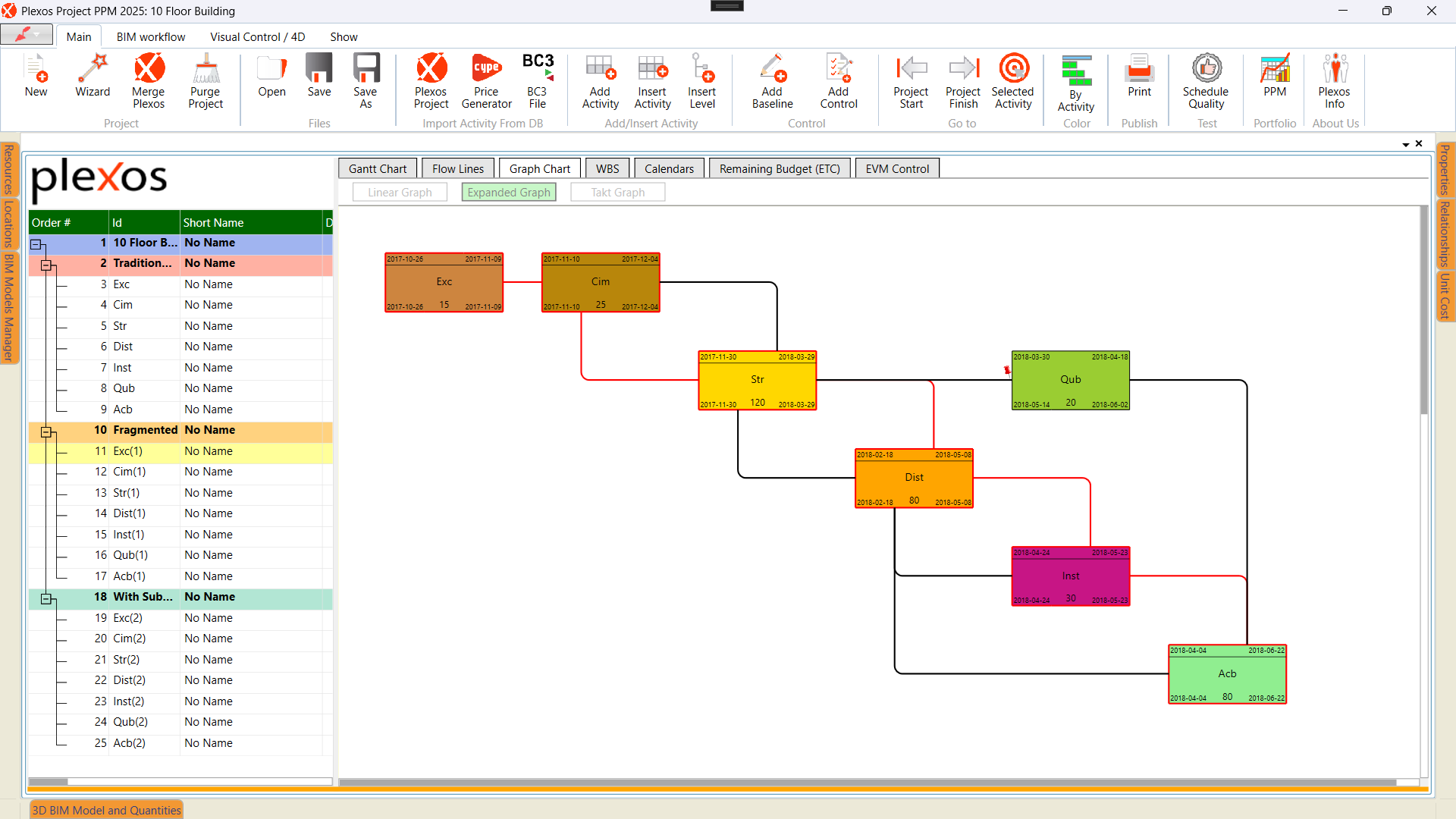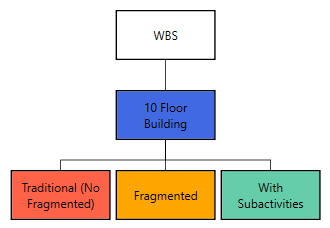
10 Floor Building
This example explores three distinct scheduling approaches for a 10-floor building.
This example contrasts three scheduling approaches for a 10-floor building: traditional scheduling with single activities, a more flexible approach with splitting-allowed activities and non-continuous execution, and finally, a lean-inspired method utilizing sub-activities as repetitive tasks.
This comparison highlights the evolution of scheduling methodologies, moving from rigid, single-activity plans towards more dynamic and efficient approaches that prioritize continuous flow and minimize disruptions, aligning with lean project management principles.


Traditional: The continuous scheduling option, as in the traditional scheduling software, disallows the splitting of activities. This constraint causes the activities to be completely critical, increasing the risk of delays and impacting the overall project timeline. This phenomenon is exemplified in the example and white paper 'Cases of criticality'.
Splitting allowed. This case considers the activities as splitting-allowed (Continuous option unselected for each activity in the Properties Panel). Plexos will compute the near-optimal fragmentation point. This option causes the activities to be partially critical (See the example and white paper 'Cases of criticality').

With Sub-activities. This case replaces traditional activities with activities of sub-activities (repetitive activities or takts), allowing interruptions in the execution. This approach ensures a more consistent production flow, ensuring more flexible and realistic schedules.
Sub-activities, while sharing the same start and finish times as their parent activities, offer granular internal schedules with more detailed dates. This level of detail enhances the realism of project schedules, better reflecting actual on-site conditions.
Furthermore, the flexibility of discretionary fragmentation and continuity within sub-activities is crucial for optimizing project timelines. By strategically sequencing sub-activities, project managers can potentially reduce the overall project duration (makespan) and mitigate the risk of reverse criticality.
Finally, the sub-activity structure provides a valuable framework for effectively scheduling complex projects that involve multiple crews or teams, enabling more efficient resource allocation and coordination.




